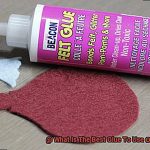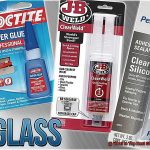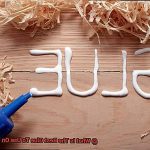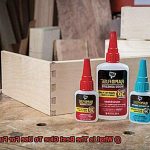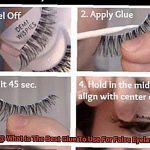If you’re a fan of leather, you know there’s nothing quite like the feel and look of this versatile material. From shoes to jackets, bags to furniture, leather is a popular choice for its durability and aesthetic appeal. But when it comes to bonding leather with other materials, finding the right glue can be a daunting task.
Luckily, we’ve got you covered. In this comprehensive guide, we’ll explore the best glues for leather and help you choose the perfect one for your project. With so many options available – from traditional contact cement and superglue to modern epoxy and cyanoacrylate – it can be overwhelming to know where to start. But fear not. We’ll dive into each type of glue’s unique properties and benefits, along with tips for proper application and usage.
Whether you’re a seasoned leatherworker or just starting out on your first project, understanding the best glue for leather is essential for achieving professional results. So let’s get started and discover which glue will give you the strongest bond on your beloved leather items.
What is Leather?
Contents
Leather is more than just a durable and flexible material; it’s a timeless classic that has been used by humans for thousands of years. From clothing, footwear, and accessories to upholstery and beyond, leather has found its way into almost every aspect of our lives.
So what exactly is leather? It’s a material made by tanning animal hides or skins. While cowhide, sheepskin, and goatskin are the most commonly used hides in leather production, other animals like deer, buffalo, pig, and even reptiles like snakes and alligators can also be used.
The process of making leather involves several stages that transform raw animal hides into a stable material that resists decay. During the preparation stage, the hides are cleaned and any hair or flesh is removed. The hides are then soaked in water to make them more pliable. Tanning comes next, which uses chemicals to transform the proteins in the hide into a stable material. The type of tanning used can affect the properties of the leather such as its softness, durability, and colorfastness. Finally, dyeing and finishing give leather its unique textures, finishes, and colors.
Leather can come in many textures like smooth, pebbled, or suede. Finishes can range from glossy to matte. Leather can also be dyed in many colors or left natural. The possibilities are endless. But whether you prefer a classic black leather jacket or a bold red leather purse, one thing is for sure: leather products are always in style.
When it comes to using glue on leather products, choosing the right glue is crucial. The best glue for leather is one that is strong, flexible, and dries clear. Contact cement and epoxy are great options for larger projects or repairs, while super glue may suffice for smaller tasks. Always follow the manufacturer’s instructions carefully and test it on a small area before applying it to the entire surface.
Types of Glue for Leather
When it comes to bonding leather surfaces, there are many types of glue available in the market. Each type has its unique properties and features that make them suitable for specific leather applications. In this article, we will discuss the five most popular types of glue for leather and their best applications.
Contact Cement
If you’re looking for a strong and flexible bond between two leather surfaces, contact cement is the way to go. This rubber-based adhesive is perfect for bonding large pieces of leather together, such as when making a leather bag or jacket. To use it, both surfaces should be coated with glue and allowed to dry before they are pressed together.
Epoxy
Epoxy is a two-part adhesive that creates a strong and durable bond that is resistant to water and heat. It’s ideal for repairing leather items exposed to harsh environments, such as motorcycle seats or boat covers. However, keep in mind that epoxy takes time to cure fully.

Super Glue
Super glue, also known as cyanoacrylate glue, is a fast-acting adhesive that creates an almost instant bond. But it’s not recommended for use on large leather surfaces since it can become brittle over time.
Hot Glue
Hot glue guns are commonly used in the crafting industry to bond various materials, including leather. However, hot glue is not recommended for heavy-duty applications as it can become brittle and lose its strength over time.
Leather Adhesive
Leather-specific adhesives are perfect for smaller leather repair jobs and fixing tears or holes in leather jackets or pants. They create a strong and flexible bond that is ideal for delicate work.
Contact Cement
When it comes to bonding leather, contact cement is a top choice. This strong adhesive creates a permanent bond, ensuring your project will last for years to come.
One of the advantages of using contact cement on leather is its ease of application. You don’t need any special equipment or clamping, making it a convenient option for those looking to finish their projects quickly. Plus, it dries quickly, so you won’t have to wait around for hours before moving on to the next step.
Another benefit of contact cement is its resistance to water and heat. This makes it ideal for items that will be exposed to moisture or high temperatures, such as outdoor gear like boots and bags.
However, there are a few things to keep in mind when using contact cement on leather. Once you’ve bonded the two surfaces together, they cannot be separated without damaging the leather. Additionally, if the glue gets on surfaces where it shouldn’t be, it can be challenging to remove. So use caution when applying the adhesive and make sure it’s only going where you intend it to go.
Epoxy
If you’re in need of an adhesive that can stand the test of time when bonding leather, look no further than epoxy. This powerful adhesive is well-known for its strength and durability, making it a top choice for leather bonding projects.
However, before diving into using just any old epoxy, it’s crucial to choose a product that is specifically designed for use on leather. Using an incompatible adhesive can lead to a weak bond that may not last. Therefore, take the time to research and select the right product for the job.
It’s also essential to choose an epoxy that dries clear to ensure no unsightly residue or discoloration is left behind on your beautiful leather project. Proper surface preparation is vital too, so be sure to clean and dry the leather and remove any old adhesive or residue before application.
When applying the epoxy, use a small brush or applicator to apply a thin layer. Any excess should be wiped away immediately with a clean cloth. And remember, patience is key. Allow the epoxy to cure fully before using your newly bonded item. This process can take several hours or even overnight, depending on the specific product used.
Super Glue
Look no further than Super Glue. This fast-acting adhesive, also known as cyanoacrylate glue, is a go-to for many due to its exceptional bonding strength. Its ability to form a tight seal and provide a long-lasting hold makes it an ideal choice for repairing shoes, bags, or belts.
While Super Glue is versatile and easy to use, there are some things to keep in mind before you start bonding your leather project. First and foremost, make sure the surfaces you will be bonding are clean and dry. Any dirt, oil or moisture can affect the strength of the bond. Additionally, apply the glue sparingly to avoid excess glue seeping out of the joints.
Advantages:
- Strong Bonding: Super Glue creates an exceptionally strong bond that will last for years.
- Quick Drying: This glue dries incredibly fast, allowing you to complete your project in no time.
- Versatile: Super Glue can be used on various surfaces, making it ideal for different types of leather.
Disadvantages:
- Difficult to Remove: Once Super Glue has dried, it can be hard to remove. However, specific solvents are available that can dissolve the glue if needed.
- Excess Application: Applying too much Super Glue can result in excess glue seeping out of the joints and ruining the finished look of your project.
Overall, Super Glue is an excellent choice for bonding leather projects when used correctly. Just remember to exercise caution when using it and follow the instructions carefully for optimal results.
Tips for Choosing the Right Glue for Leather Projects
When it comes to leather projects, choosing the right glue is critical to achieving success. Without the appropriate adhesive, your project may fall apart or have a weak bond that won’t hold up over time. Here are five factors to consider when selecting the right glue for your leather project:
Types of Leather:
Different types of leather require specific types of glue. For instance, suede and nubuck leathers are delicate and require a gentle adhesive, while full-grain leather can handle a stronger adhesive like contact cement.
Purpose of Your Project:
Think about the purpose of your project. Will it be exposed to water or heat? Will it undergo heavy wear and tear? If so, choose a waterproof glue that can withstand moisture and heavy use.
Color of Your Leather:
Some glues can discolor or darken leather, so ensure that you select a glue that won’t affect the appearance of your project. Opt for a clear-drying glue or one that matches the color of your leather.
Application Method:
Consider the application method you’ll be using. Some glues require special tools or techniques, while others can be applied with a brush or spray applicator. Make sure to read the instructions carefully before purchasing any glue to ensure it’s compatible with your application method.
Strength of Bond:
The bond’s strength will depend on the type of glue you use. Choose a strong adhesive if your project requires heavy-duty use or weight-bearing capacity.
Benefits of Using the Right Glue on Leather
Leather is a luxurious material that has been used for centuries to create stylish and durable products, such as shoes, bags, jackets, and furniture. However, working with leather can be challenging, especially if you don’t have the right tools and materials. One of the most critical factors in creating a successful leather project is choosing the right glue.
As an expert in this field, I’m here to share with you the benefits of using the right glue on leather. Let’s explore them in detail.
Strong and Long-Lasting Bond
The first and most crucial benefit of using the right glue on leather is that it provides a strong and long-lasting bond between the different pieces. Leather products undergo frequent use and stress, so it’s essential to ensure that the bond remains secure. Whether you’re repairing a favorite pair of shoes or creating a new leather bag, using the right glue will prevent the item from falling apart or losing its shape.
Maintains Appearance
In addition to providing a strong bond, using the right glue on leather also helps maintain its appearance. Some types of glue may discolor or damage the leather over time, leading to unsightly stains or deterioration. By choosing a high-quality leather glue specifically designed for use on leather, you can avoid these problems and ensure that your leather item stays looking great.
Saves Time and Money
Using the right glue on leather can save you time and money in the long run. If you use a low-quality or inappropriate glue, you may find that the bond weakens over time, and you need to reattach the pieces or even replace them entirely. This can be a costly and time-consuming process, especially if the item is expensive or difficult to repair. By investing in a good-quality leather glue from the start, you can avoid these issues and enjoy your leather item for years to come.
Types of Leather Glue
There are several types of leather glue available on the market, including contact adhesives, water-based adhesives, and epoxy adhesives. Contact adhesives are popular because they provide an instant bond and are easy to use. Water-based adhesives are eco-friendly, while epoxy adhesives offer a strong and durable bond.
How to Apply Glue to Leather Properly
Leather is a beloved material for its durability, versatility and aesthetic appeal. However, when it comes to attaching different parts of leather together, choosing the right glue and applying it correctly is crucial. Here are five sub-sections that will guide you in how to apply glue to leather properly.
Choose the Right Type of Glue
The first step to applying glue to leather properly is selecting the right type of glue for your project. Contact cement is one of the most popular and effective types of glue for leather. Epoxy and cyanoacrylate (super glue) are also suitable for leather projects. Check the manufacturer’s instructions carefully to ensure you’re using the best type of glue for your needs.
Clean and Dry the Leather
Before applying any glue, make sure the surface of the leather is clean and dry. Any dirt, grease or moisture can interfere with the adhesive bond and weaken it over time. Use a damp cloth to remove any debris and allow it to dry thoroughly before proceeding.
Apply Glue Carefully
To apply the glue, use a brush or spatula to spread a thin layer of glue on both surfaces that you want to bond together. Make sure to apply an even coat, avoiding excessive amounts of glue that can cause stiffness or unsightly marks on the leather.
Allow the glue to dry for a few minutes until it becomes tacky before pressing the two surfaces firmly together. Hold them in place for a few seconds to ensure a strong bond.
Use Clamps or Weights for Larger Projects
For larger projects or when bonding multiple layers together, consider using clamps or weights to hold everything in place while the glue dries. This will help maintain alignment and prevent shifting during the bonding process.
Be Patient
Finally, be patient when working with glue and leather. Allow sufficient time for the adhesive to fully cure before handling or using your finished project. Rushing the process can cause your project to fail, so take your time and follow the instructions carefully for best results.
Conclusion
In conclusion, the importance of selecting the right glue for leather projects cannot be overstated. Leather is a versatile and timeless material that requires a bond strong enough to withstand frequent use and stress while remaining flexible. The market offers numerous options, making it difficult to know where to begin.
Popular types of glue for leather include contact cement, epoxy, super glue, hot glue, and leather adhesive. Each type has unique properties and benefits that make them suitable for specific applications. When choosing the right glue for your project, consider factors such as the type of leather, purpose of your project, color of your leather, application method, and strength of bond required.
Properly applying glue to leather involves selecting the appropriate adhesive for your needs and carefully cleaning and drying the surface before application. For larger projects or when bonding multiple layers together using clamps or weights will help maintain alignment during the bonding process.
Using the correct glue on leather provides a strong and long-lasting bond while maintaining its appearance; this saves time and money in the long run. By following these tips and guidelines carefully, you can achieve professional results with your beloved leather items.


